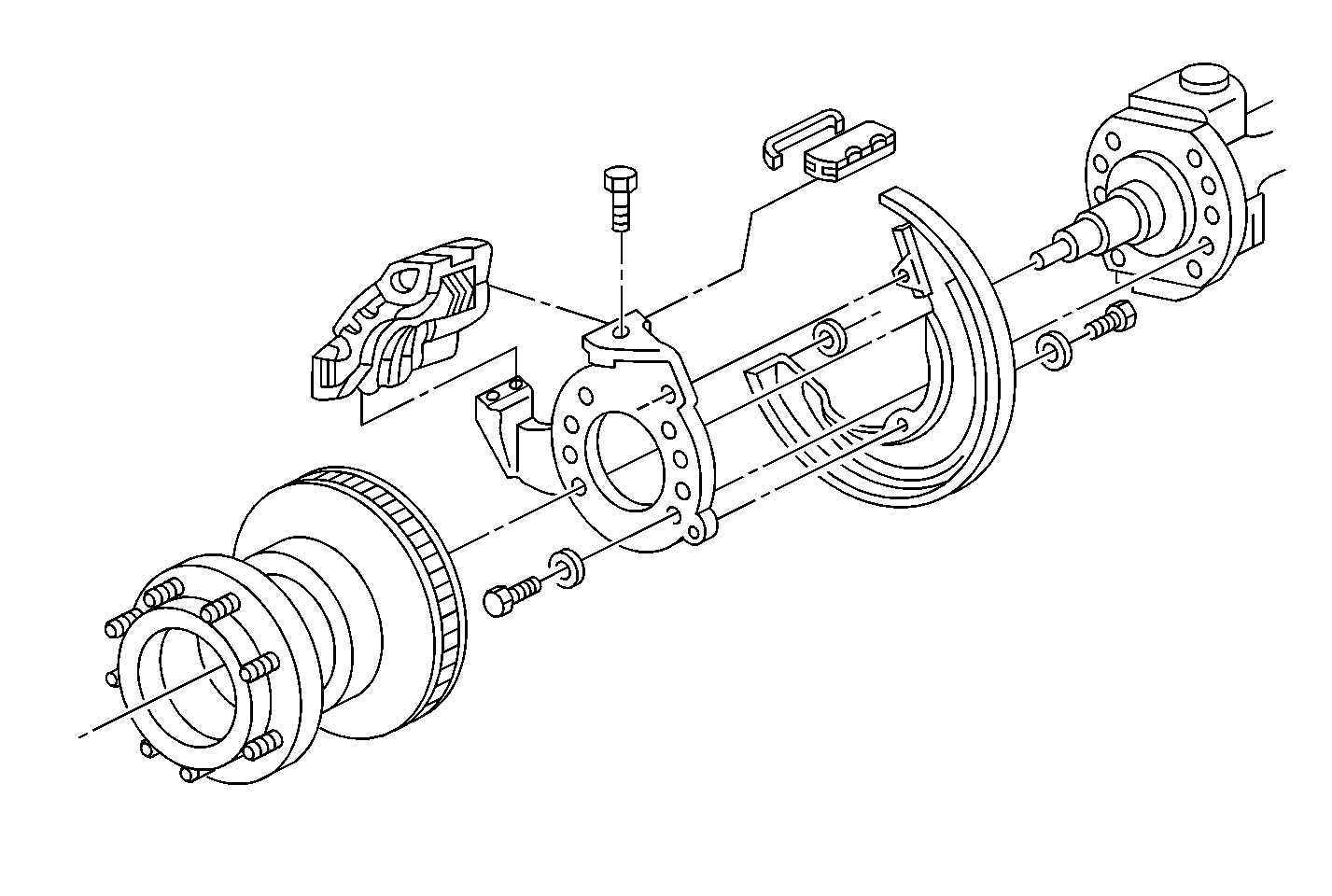Front

All hydraulic foundation brakes are disc brake type. The
Dayton-Walther rail slider type disc brake caliper is used on the 8,100 lb
front axle. All other axles use the Bendix® rail slider type disc brake
caliper.

The front and rear disc brake assembly consists of the following components:
| • | The brake rotor (with a hub, or with a wheel) |
| • | The brake caliper mounting plate |
The brake rotor is bolted to the front hub or wheel. The
rotor turns with the tire and wheel assembly. The brake caliper housing has
machined bores and pistons. A seal in a groove of the wall in each bore
provides a hydraulic seal and retracts the piston when fluid pressure is relieved.
A dust boot keeps the piston bore clean. A metal heat shield protects the
dust boot from the heat caused by braking friction. The brake caliper is
mounted by a brake caliper retainer and the brake caliper retainer spring
to the stationary brake caliper mounting plate. The brake caliper mounting
plate and the brake shield are bolted to the steering knuckle.
The brake pad assemblies are held in place on each side of the brake
rotor. The outer brake pad moves with the brake caliper housing. Depending
on axle size, the inner brake pad is held in place by either the brake caliper
mounting plate or the brake caliper housing. All original equipment brake
pad linings are asbestos free.
Applying the brake pedal causes hydraulic pressure to move the brake
caliper pistons. This causes the brake pads to clamp the brake rotor. The
brake caliper adjusts its clamping position by sliding laterally in the support
rails on the brake caliper mounting plate.
Releasing the brake pedal relieves the pressure applied to the brake
caliper pistons. The pistons are pulled back in the bore by the action of
the square cut piston seals returning to their original shape. This allows
for a running clearance between the brake pad linings and the brake rotor.
Rear Disc Brake Components
Rear Disc Brake Components (Dayton-Walther)




